The U.S. Department of Energy’s (DOE) Office of Fossil Energy and Carbon Management (FECM) is investing in the education and training of America’s future scientists and engineers through its a University Training and Research (UTR) program.
Office of Fossil Energy and Carbon Management
September 16, 2024The U.S. Department of Energy’s (DOE) Office of Fossil Energy and Carbon Management (FECM) is investing in the education and training of America’s future scientists and engineers through its a University Training and Research (UTR) program. This program is supporting early-stage research at U.S. colleges and universities, helping to advance FECM’s mission of minimizing the environmental and climate impacts of fossil fuels and industrial processes while working to achieve net-zero emissions across the U.S. economy.
The UTR program highlights the key role technology plays in addressing America’s energy challenges, promotes the development of innovative technologies, and reinforces workforce development as a part of the nation’s continued economic prosperity. Additionally, this program supports the Historically Black Colleges and Universities and Minority Serving Institution (HBCU–MSI) and the University Carbon Research programs.
The HBCU-MSI program aims to equip underrepresented, diverse student groups with cutting-edge, translatable skillsets through research and development opportunities that will help them sustain successful science, technology, engineering, and mathematics (STEM) careers. This program also builds the capacity for research in FECM priority areas at historically disadvantaged institutions of higher education.
The University Carbon Research program emphasizes research and development efforts that are structured to achieve FECM’s goals in concert with student education in relevant carbon management topics—ranging from carbon capture and computational energy sciences, all the way through to the development of advanced high-performance materials, sensors, and controls.
Meet the 2023 University Training and Research Participants
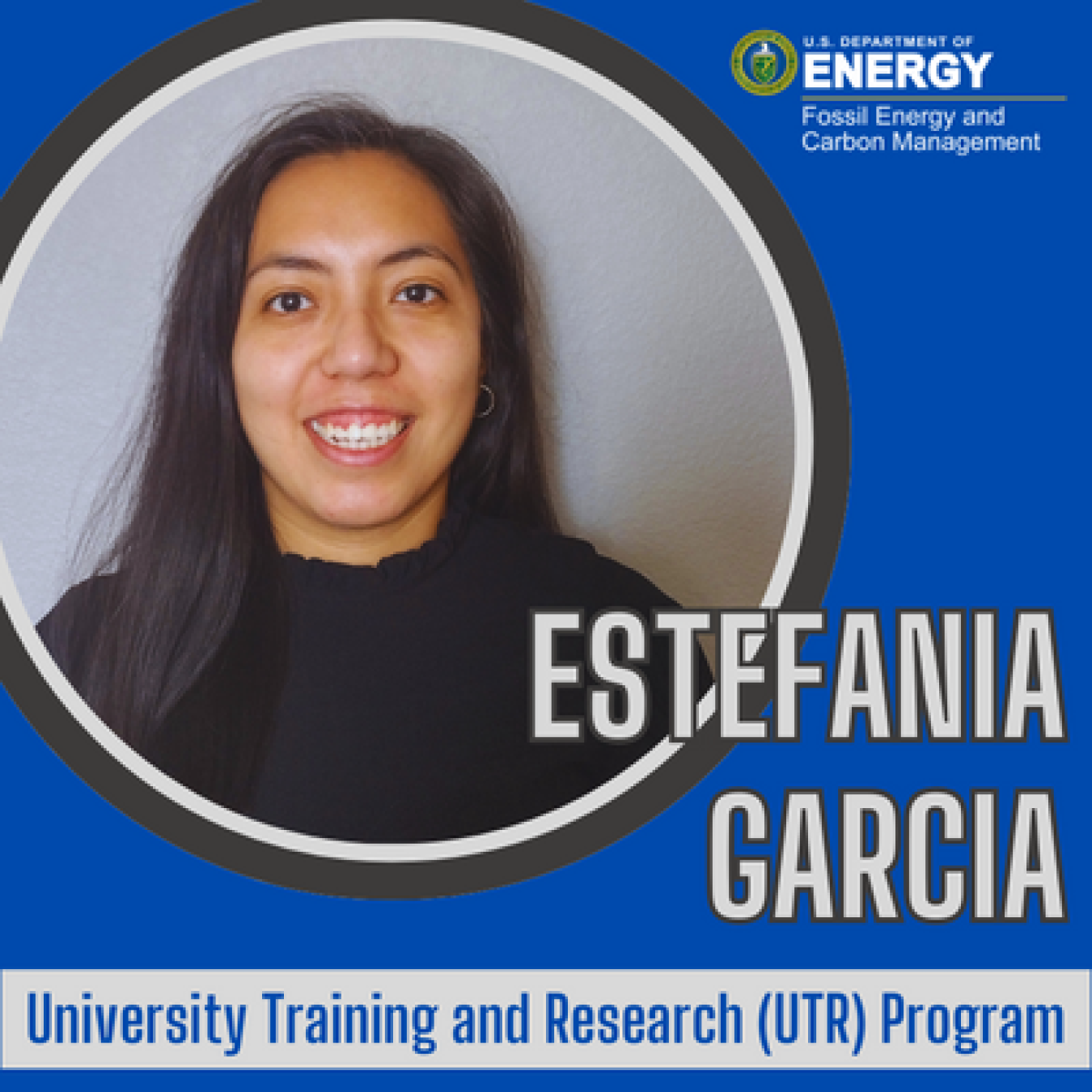
Estefania Garcia is a graduate student studying biogeochemistry at the Georgia Institute of Technology.
Estefania’s research is centered on studying trace elements, including arsenic and selenium, in coal fly ash, a byproduct of fossil fuel use in the coal industry. The results of this research should provide better insight into waste disposal and the possible beneficial uses of waste in the concrete industry.
Estefania’s research involves characterizing representative samples of coal fly ash from across the United States. The re-use of fly ash decreases the amount of cement needed for concrete mixtures, leading to the potential reduction of greenhouse gas emissions.
Additionally, Estefania’s efforts will provide a benefit to communities. Fly ash is mostly disposed of in ash ponds, and leaching from these ponds may affect the quality of local water quality. The information gathered from studying arsenic and selenium mobility, along with the oxidation for certain fly ashes, would be beneficial to those communities. Estefania feels the UTR program has provided her with an excellent opportunity to harness her research skills and would recommend the experience to other students.
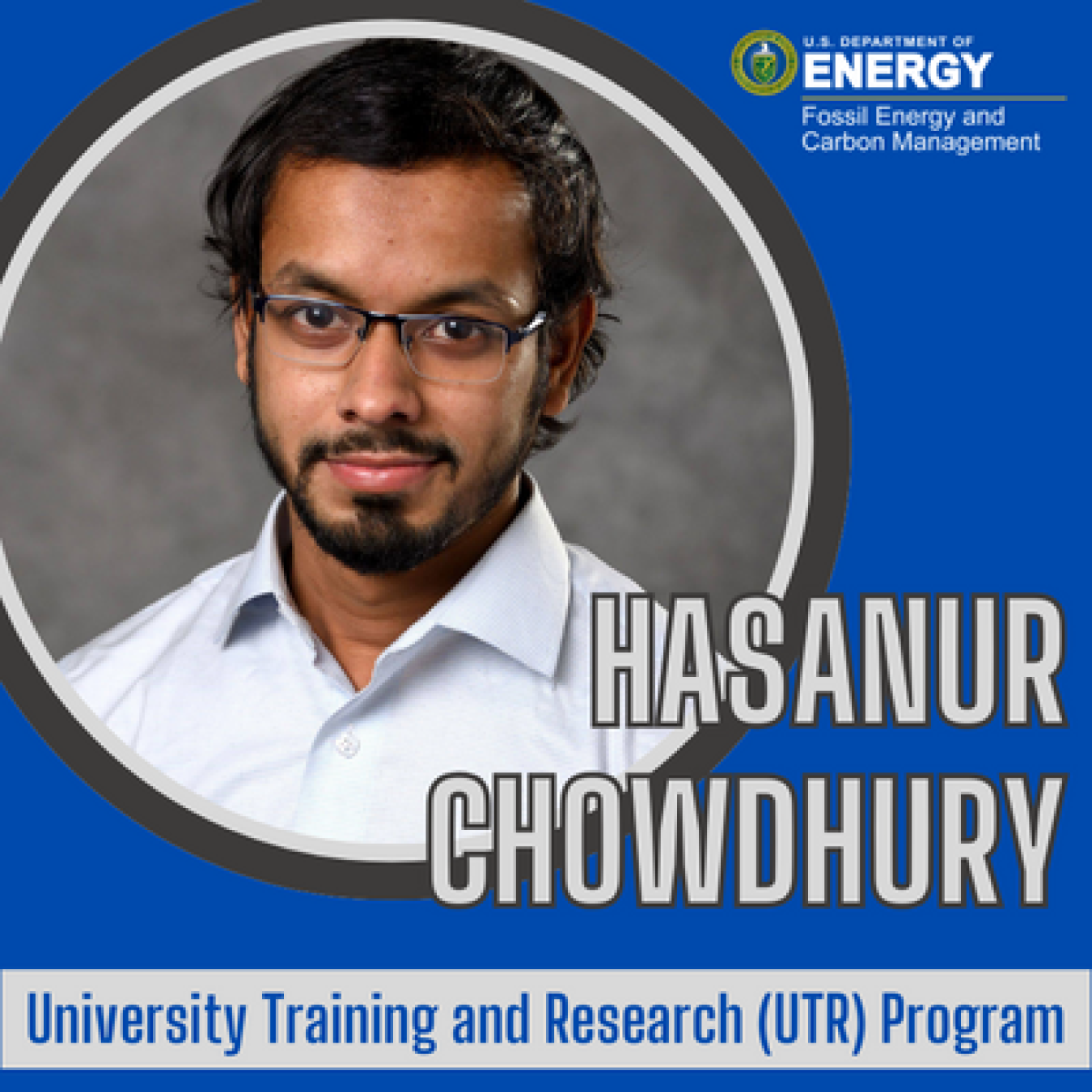
Hasanur Chowdhury is a PhD student specializing in Fiber-Optic Sensors research at Michigan State University, and he is participating in the UCR program.
Hasanur’s research is centered on studying the high accuracy and stability of fiber-optic sensors for coal-fired advanced energy systems. This research helped to develop a novel method to measure temperature with high accuracy and long-term stability compared to conventional sensors.
Temperature is a key parameter to monitor and control in advanced energy systems. Hasanur’s research involves fabricating a fiber-optic Fabry-Perot Interferometer sensor that can measure high temperature with excellent accuracy and is free from cross-strain sensitivity and calibration requirements.
Additionally, Hasanur’s efforts will provide a community benefit. A fiber-optic sensor-based temperature measurement system that provides high accuracy, immunity to cross-strain sensitivity, and long-term stability for extended periods of operations, compared to conventional thermocouples, can be used in other high-temperature measurement applications such as power plants, aerospace, metallurgical processes, automotive industry, oil and gas industries, etc., ultimately improving operational efficiency and reducing greenhouse gas emissions.
Hasanur is proud of his accomplishments gained in the UTR program. He believes the hands-on research experience will benefit his future opportunities regarding fiber-optics research in advanced energy systems. He says he would recommend the experience to other students to nurture their research potential and gain professional training for the future.
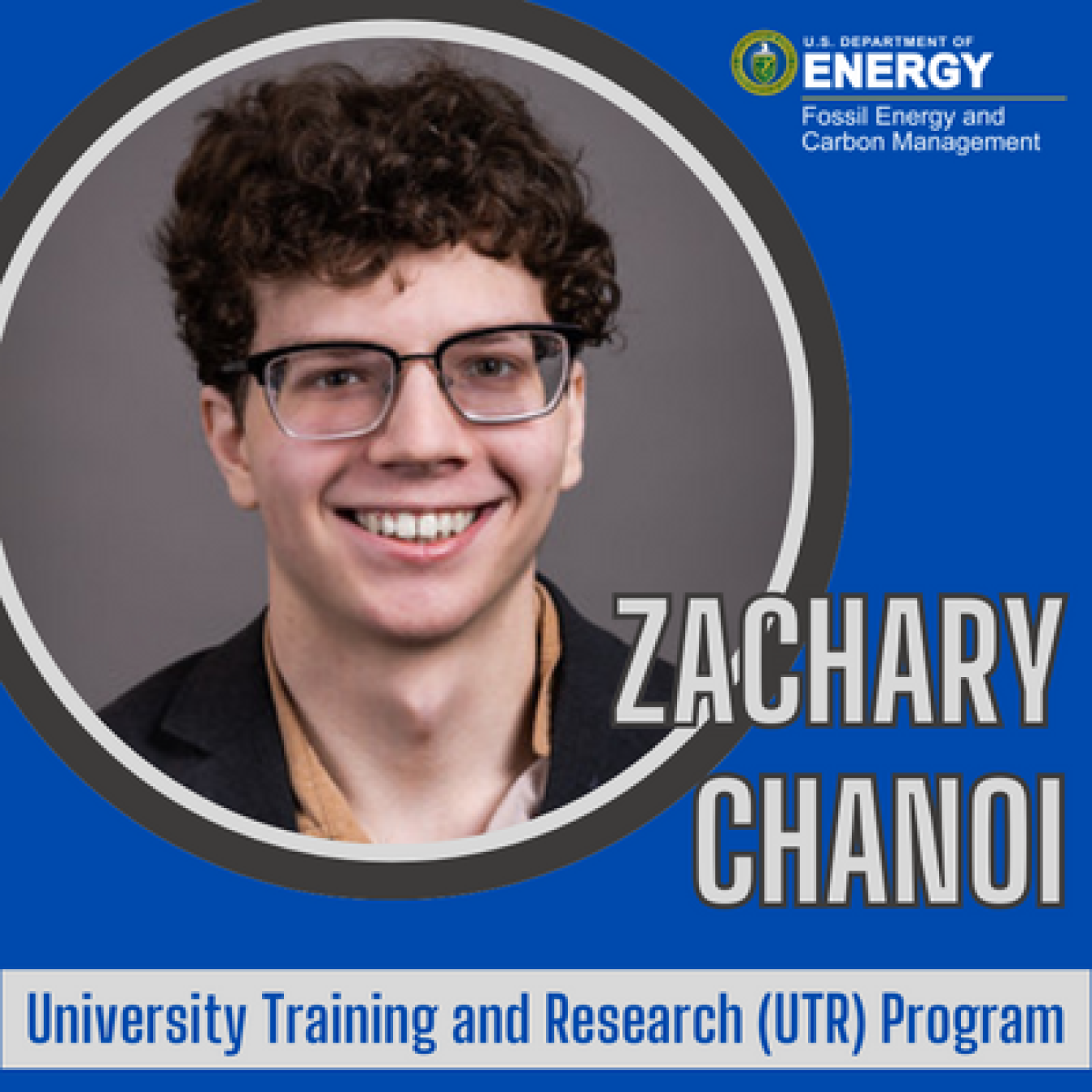
Zachary Chanoi is a graduate student studying Mechanical Engineering at the University of Texas at El Paso and he is participating in the HBCU-MSI program.
Zachary’s research is centered on using microwave energy and iron-based alumina catalysts to produce valuable hydrogen as a clean energy source by producing solid carbon nanotubes from hydrocarbons without releasing harmful carbon dioxide.
Zachary’s research focuses on the synthesis of catalyst via a combustion process using characterization instruments, such as an X-ray diffraction, to map process-structure-property relationships of the catalysts to optimize their use in the microwave assisted production of hydrogen.
Additionally, Zachary’s research provides environmental and economic benefits to the community by demonstrating a process that could ultimately harness energy from fossil fuels without releasing greenhouse gas emissions. Additionally, Zachary notes the more direct benefit of being able to mentor and guide other students through their first-time research experiences.
Zachary’s involvement in the HBCU-MSI program has led to him participating in another FECM program that promotes diversity and career development, the National Energy Technology Laboratory's Consortium of Hybrid Resilient Energy Systems (CHRES); a program providing summer internships to students and faculty from four Hispanic-Serving Institution. He would recommend the experience to other students, especially those from disadvantaged communities who lack resources and exposure to careers in research.
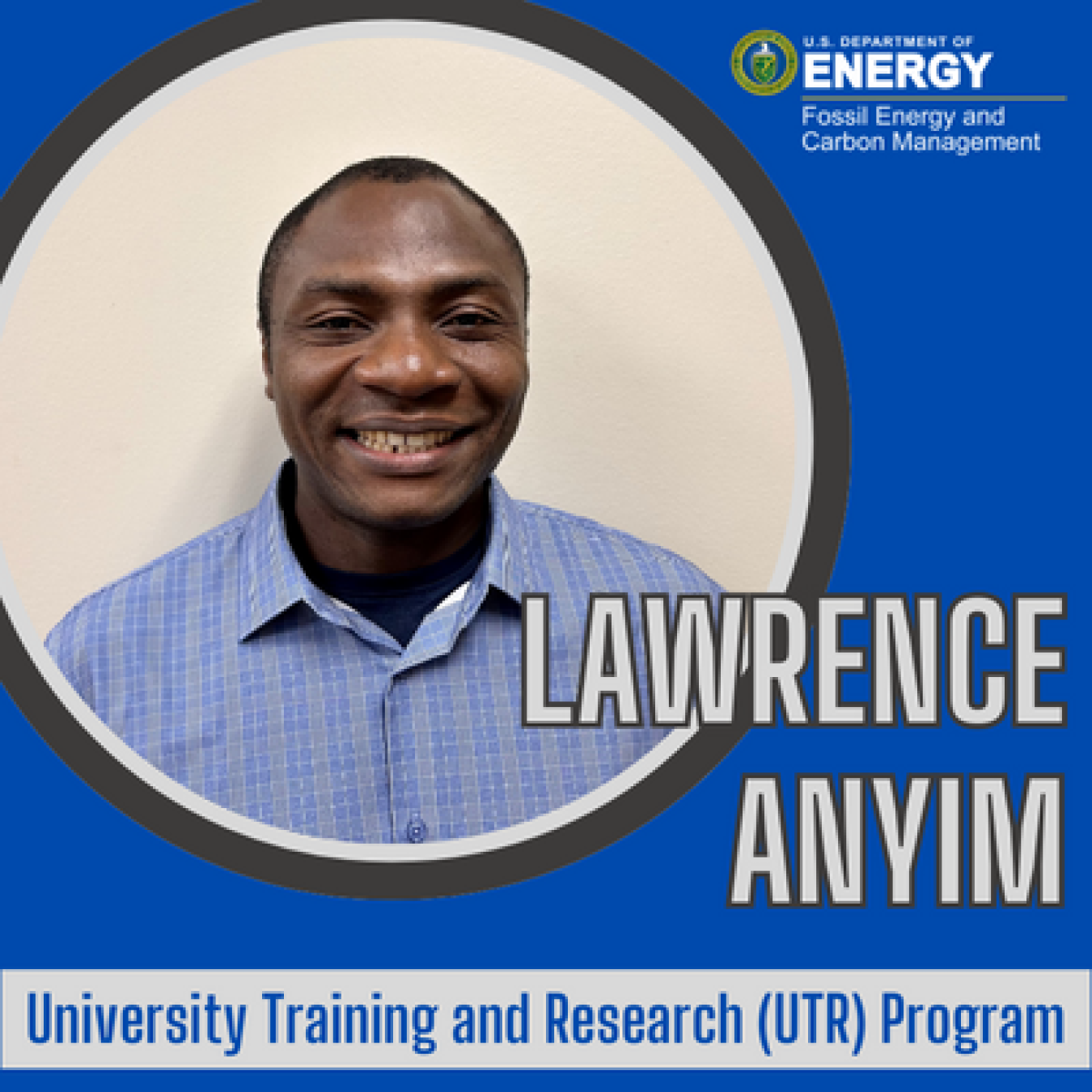
Lawrence Anyim is a graduate student studying Energy Engineering at the University of North Dakota and he is participating in the UCR program.
Lawrence’s research project, Biogas Utilization in Refuse Power Plants, or BURP is focused on developing a comprehensive baseline life cycle assessment (LCA) for a dual fuel combustion system. This dual fuel combustion system integrates fossil and renewable resources while incorporating carbon dioxide capture and storage technologies. In particular, the research centers around modeling the LCA for utilities that utilize coal refuse, often called waste coal, in conjunction with biogas to minimize the overall carbon footprint associated with such facilities.
Lawrence’s research involves building impact assessment models that can help in developing net-zero or net-negative carbon emission power plants that limit the effects of climate change and remediate areas affected by coal waste. The models can also help in determining the sizes of power plant components, feedstock requirements, and the best scenarios for sustainable electrical energy production.
Lawrence believes his research has been beneficial to his studies and has even provided him new career aspirations. After working on the exploration and extraction of fossil fuels, his research interests now lie in reducing the environmental impacts of fossil fuel use. The research conducted through the UCR program has assisted him in quantifying the environmental impact of an energy system, significantly expanded his comprehension of waste remediation techniques, and revealed the potential of bioenergy-based systems integrated with carbon capture and storage to mitigate carbon emissions effectively. Additionally, Lawrence has gained insight into the career opportunities that integrate energy and environmental studies in the fields of renewable energy development, sustainability consulting, environmental policy analysis, climate modeling, and green technology innovation.
The community benefits of Lawrence’s efforts are abundant and diverse. By combining waste coal remediation, biogas production, and carbon capture and storage in long-term power generation, Lawrence and his team aim to transform wastes into resources. This approach reduces the power plant’s environmental impact, creating new economic opportunities and cleaner air. He believes his efforts will allow communities to enjoy enhanced sustainability, economic growth, and improved health.
Lawrence highly recommends the UCR program research experience to his fellow students, touting the exposure of hands-on training and in-depth research in carbon management that he feels will equip his peers with practical skills and empower them to actively contribute to building a more sustainable energy future.
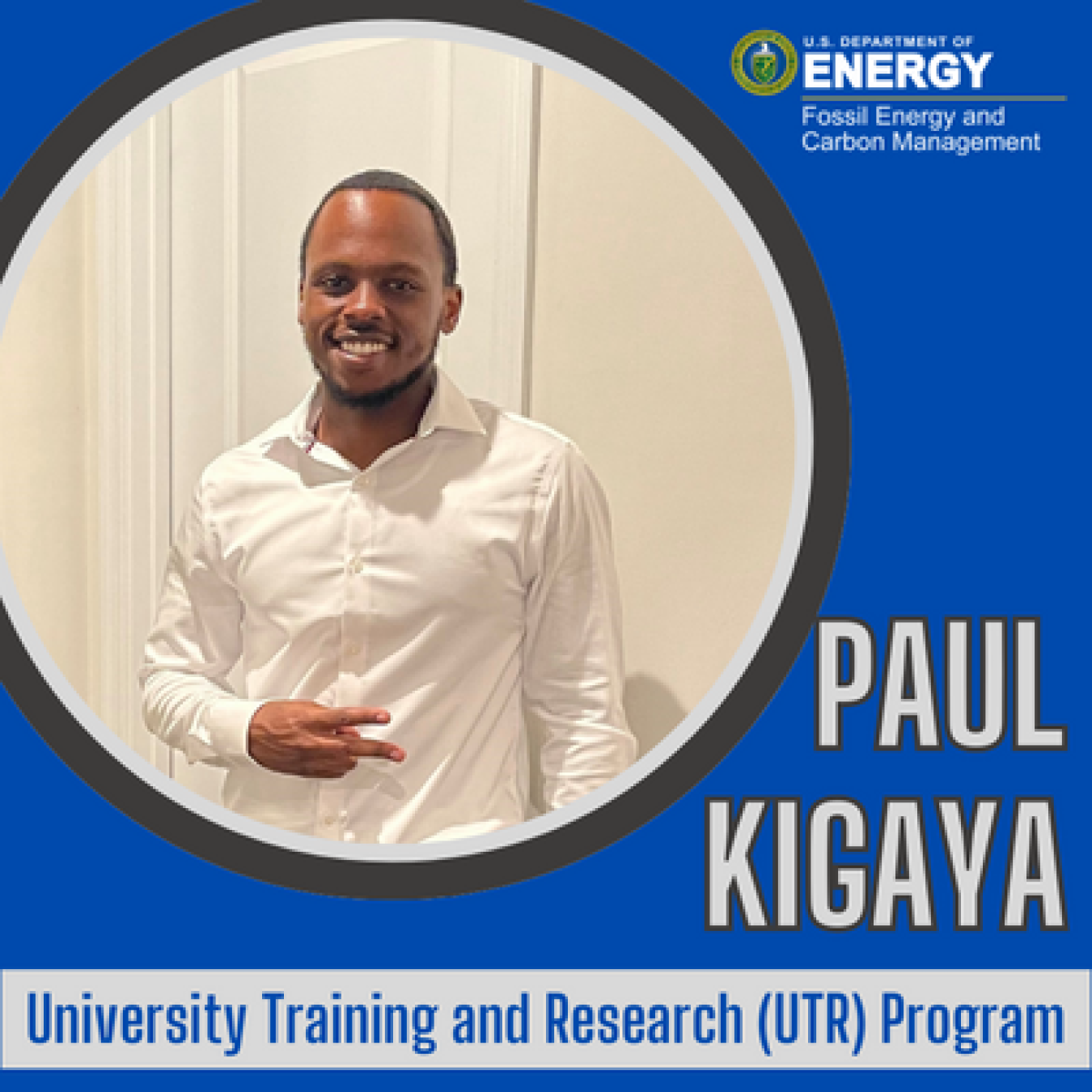
Paul Kigaya is a senior studying Engineering Physics at Morgan State University, and he is participating in the HBCU-MSI program.
Paul’s research is centered on using computation skills to create user interface to collect and save data from an external hardware system.
Paul believes his research will contribute to the possibility of testing thermal properties of materials that will help build a net-zero greenhouse gas emission future.
Additionally, Paul credits the research conducted in the HBCU-MSI program with advancing his knowledge and skills related to his studies at Morgan State’s School of Computer, Mathematical & Natural Sciences. He describes the program as a life-changing opportunity he would not be privy to as part of a traditional undergraduate curriculum, and he recommends the experiences to his peers.
Surja Sarkar is a graduate student studying mechanical engineering at Georgia Southern University. Surja is participating in a project funded by the University Carbon Research (UCR) program.
This research focused on evaluating the performance, cost, and environmental impacts of waste coal and biomass, and torrefied biomass co-fired power plants. Surja conducted life cycle assessments to consider the environmental impacts of these power plants. His research demonstrated the environmental feasibility, as well as understanding the potential benefits and challenges associated with this energy generation method.
The performance, cost, and environmental study of waste coal and biomass co-fired power plants could contribute to the ongoing dialogue about the role played by co-fired power plants in achieving cleaner and more sustainable energy sources. This study is beneficial and crucial for making informed decisions and understanding the potential trade-offs and advantages connected to these energy sources. Results from this research can potentially influence policy decisions, industry practices, and future research directions.
Surja credits his experience for exposing a variety of professional opportunities in energy consultancy, policy analysis, and environmental evaluation, emphasizing the global significance of sustainable energy solutions. His research highlighted the importance of lifelong learning and personal development in a continuously evolving field. Additionally, Surja gained a better understanding of sustainable energy, improved his analytical skills, and learned how to navigate the intricacies of interdisciplinary studies.
His experience strengthened his commitment to sustainability and empowered him to make a meaningful contribution to addressing global energy concerns in the future. Surja recommends this experience to other students, describing his research as an enriching journey that sharpened his critical abilities, provided multidisciplinary insights, and addressed pressing environmental challenges.
Sophie Mehl is a materials engineer working for SpaceX with a focus on creating the first fully reusable rocket-Starship. Prior to her current role, she graduated with a master’s degree in materials science and engineering from Michigan Technological University.
Sophie’s research with DOE centered on nickel superalloy development to increase material weldability without decreasing other material properties, like strength. This research could impact power plant applications for steam turbines due to their required high operation temperatures and complex shape. Identifying a way to create a more weldable nickel superalloy will help to reduce strain put on steam turbines and can help to improve power plant productivity.
Sophie’s experimental work involved casting a nickel superalloy via vacuum induction melting; perform a homogenizing heat treatment; and forge, hot roll, and complete a solutionizing and aging heat treatment on the alloy to simulate the processing an allow would undergo during production. The material properties on the allow were then tested and compared to other commercial allows to determine if the properties were similar or improved.
The research conducted by Sophie will help contribute to a sustainable, net-zero greenhouse gas emissions future by helping steam turbines and other equipment in power plants perform at high temperatures increasing overall efficiency, which leads to increasing environmental sustainability.
Sophie is grateful for the opportunity to work and learn under DOE’s UTR program which she says has given her a sense of purpose in her research by contributing to increasing sustainability in materials science.
Paulo Victor Galvao Simplicio is a PhD student specializing in robotics at West Virginia University.
The hands-on experience offered in the UCR program allowed Paulo to engage in comprehensive research including the unique opportunity to combine robotics, dynamical systems, unmanned aerial vehicles (UAVs), and path planning in the field of mechanical engineering.
Paulo’s research project involved developing advanced algorithms for drones to inspect tailing dams. Combining robotics and technology to conduct autonomous UAV inspections of tailing dams helped to identify potential hazards and vulnerabilities to minimize the risks of catastrophic dam failures. This early detection of potential dam failures averts environmental incidents than can release harmful substances into the ecosystem.
Paulo described his unique opportunity to apply the theory learned in class in the field as ‘quite rewarding,’ especially knowing his research offered societal advantages that safeguards the environment and increases public safety.
Mohsen Rabbani is a PhD student specializing in mining and metallurgical engineering at the University of Nevada-Reno.
Mohsen’s research project offered him the opportunity to advance his central PhD thesis project “Sustainable and Cost-Effective Phytoremediation Technologies in the Management of Contaminated Soils Adjacent to a Coal Combustion Product Impoundment." This project involves analyzing suitable plant species for the removal of heavy metals and remediation of a polluted site with coal fly ash. These plant species can be used for the remediation of either abandoned coal mining sites or coal refuse tailing dams. Mohsen hopes to use this new concept for eliminating environmental problems associated with the coal industry, which would be a first in the state of Nevada.
Coal power plants are used to generate electricity and can also cause environmental issues like coal fly ash, a byproduct of the coal burning process that consists of ultra-fine particles containing heavy metals. These metals can pollute soil and water, enter the food chain, and pose severe health risks for humans and the ecosystem. Mohsen’s research introduces phytoremediation to minimize the risks. Phytoremediation is a process using plant species to remove heavy metals through photosynthesis, which absorb carbon dioxide and sun energy to produce energy and oxygen.
Mohsen’s research has been characterized as a net-zero greenhouse gas emissions pathway and a suitable process to direct carbon capturing, which is aligned with the current approach to address carbon removal concerns. His research will be beneficial for the energy (coal) industry, ecosystem, and communities, with direct long-term effects of increasing overall quality of life. It is also possible to commercialize this project as an extensive-scale application that can be used for direct carbon capturing.
Through the UCR program, Mohsen believes researchers have more time and opportunities to collaborate as advanced manufacturing, cybersecurity, intelligent data analytics, and high-performance computing is integrated into fossil plants of the future.
Sumit Chanda described his research project with UTR’s HBCU-MSI Program as an opportunity to solve some of the most critical problems the world is facing like energy security, environmental pollution, and waste management.
Sumit’s research focused on generating hydrogen by using sustainable resources by way of gasification. This process involved developing a low-cost, economically scalable modular hydrogen gasification plant that utilized sustainable resources like biomass and municipal waste to produce hydrogen fuel for local demand. This process lessens the technological problems associated with hydrogen transportation and storage. The success of his research may significantly impact how the U.S. distributes energy and supports the energy transition.
Focusing on a modular gasification system that relies on locally available materials to produce high-quality gaseous hydrogen fuel will enable local power resiliency and boost the socio-economic transitions for the remotest communities.
Sumit believes this program has been valuable to him as a first-generation student who can work to better the future by conducting game-changing research to produce sustainable energy for the planet. Additionally, Sumit believes the eco-system of industry-academia and natural labs collaborating has enriched his experiences as he grows into his engineering profession while also broadening his career opportunities.






